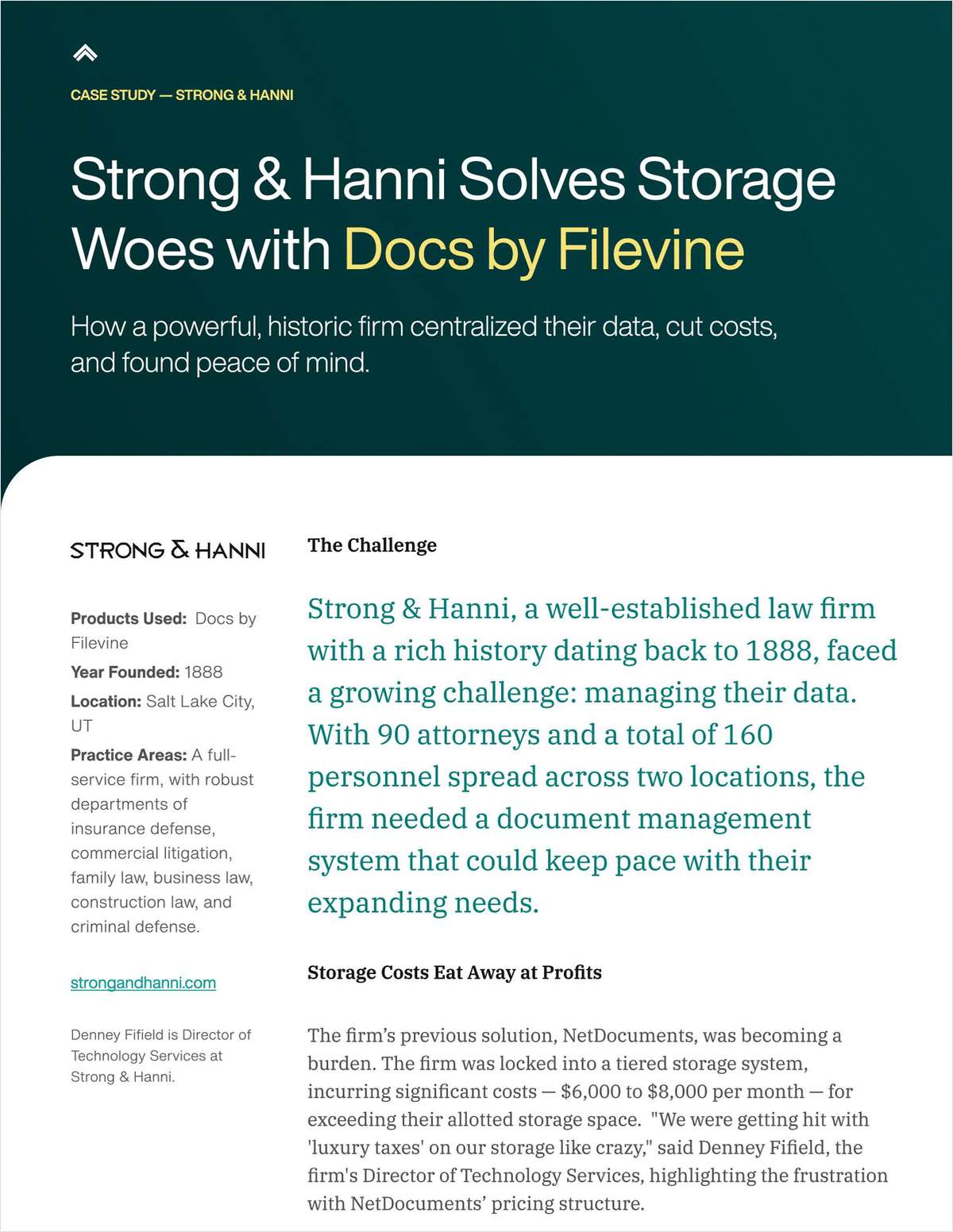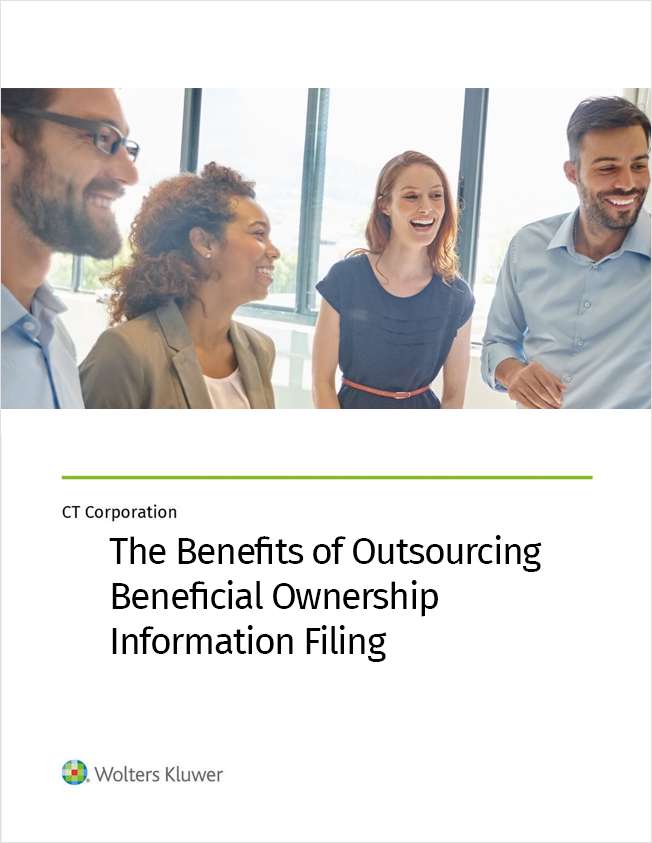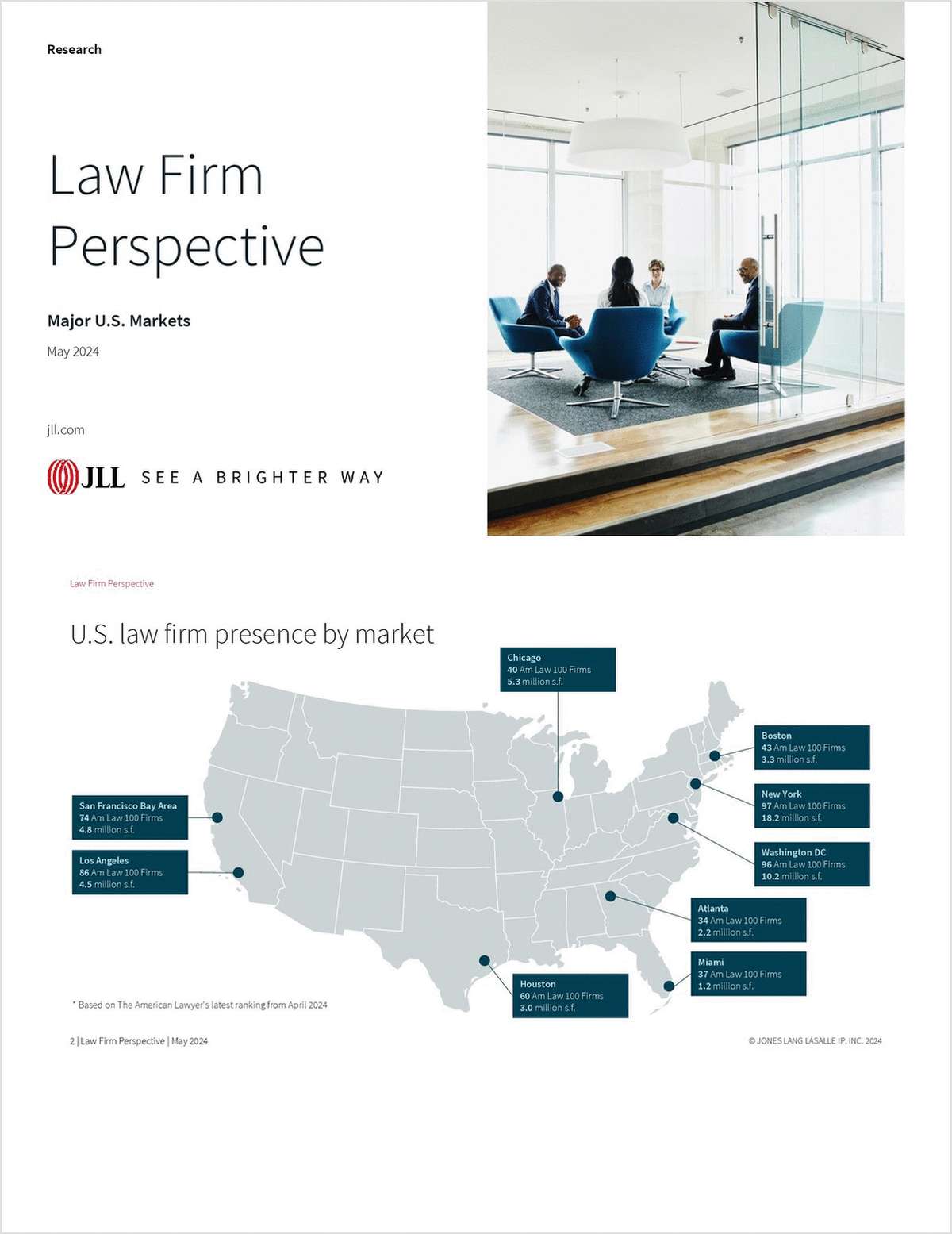 Credit: Shutterstock
Credit: ShutterstockIncremental Change Is the Key to Law Firm Innovation
To make the most out of technology implementations, law firms would do well to push less and listen more in an effort to ward off the effects of technology fatigue.
September 17, 2019 at 11:32 AM
7 minute read
With the increasing creation and adoption of automation and intelligent technology, the last few years have generated incredible potential to help law firms resolve their practice inefficiencies. However, these technology-based solutions have frequently failed to produce the desired results. That is because technology innovation in the legal space, in a technical sense, has developed faster than the ability of most firms to process and integrate these new and powerful—yet complex—tools. And what law firms are quickly learning is that vast sums of money spent on acquiring tools will not actually translate into efficiency gains if their users never actually learn to use these tools—or, even worse, get up to speed on the tools but find no value in their implementation.
It may seem counterintuitive for a technologist to suggest that law firms consider less tech-centric approaches to problem-solving and innovation. The basis for this call for introspection, however, is to help firms successfully integrate new technologies that actually drive measurable improvements to existing practices and workflows. The goal is to avoid frustration and apathy toward the adoption (not the implementation) of technology.
In fact, the frustration experienced by law firms in this regard has given rise to a growing movement suggesting that the best strategy for innovation might be to push less and listen more in an effort to ward off the effects of technology fatigue that many firms are experiencing. The basis for this approach is the realization that it is critical to obtain the buy-in and acceptance of lawyers before asking them to make substantive changes to their customary methodologies. Without it, they are likely to stick with old customs and reject any attempts to promote workflow efficiency.
|Innovation Beyond Technology
There is no doubt that the solutions being offered in the form of new workflow technology are both tempting and persuasive. These tools truly present the opportunity for transformative change to the practice of law. However, in order for that to happen, law firms and technology vendors need to stop looking at these solutions in a vacuum. Every firm is different, and the motivation of each workplace environment is unique. Firms need to have a strong understanding of their individual cultures in order to successfully implement a new solution.
A good example of the school of thought that seeks to acknowledge and address the hesitancy of lawyers to embrace new technology is the campaign known as #BringBackBoring, which is generally credited to the law firm consultancy Janders Dean. The concept is predicated on the notion that before a law firm tries to implement a technology solution, both the firm management and the technology vendor need to consider the true needs, desires and preferences of the personnel that will be using these tools.
This process requires an examination of specific information such as who the users are, what their practice entails, their individual practice styles, their motivations and fears, and those of their clients. Before a firm can implement a technology-based change strategy, the landscape of its personnel and their personalities must be taken into account. To implement meaningful change, a law firm needs to fully understand its members, their work habits and motivations before trying to make changes to the way these individuals work.
|Incremental Change
As difficult as it may be for technologists to hear, a key component to the successful implementation of meaningful workflow change is to avoid the temptation to immediately seek a comprehensive tech-based solution to a workflow problem.
It may well be that an appropriate technology solution exists to address an attorney's complaint, but without first finding out the true basis for this person's frustration, jumping straight to a tech-based solution may only exacerbate the problem and alienate this individual. Rather, firms should consider an incremental change-based solution that first factors in the role of human psychology and behavior. The best first step begins with understanding your subject by means of a user-centric philosophy to determine what motivates them and what doesn't.
This process involves engaging in formal discussions with attorneys and staff about their process or workflow frustrations and difficulties. Beyond just listening, however, these exchanges should be true dialogues with the attorneys that allow them to offer examples of both their negative and positive experiences, and also offer ideas and suggestions. In addition, these discussions should also be coupled with a system that measures and monitors how the attorneys are working with the firm's existing workflows and systems.
|Include Attorneys
In addition to examining and surveying users, law firms should make efforts to make their attorneys institutionally invested in innovation. Lucy Dillon, chief knowledge officer at Reed Smith, notes that the firm has created a formal framework for developing and implementing technology initiatives.
The Reed Smith program invites "innovation ideas" from its attorneys. This process involves an opportunity assessment process, which looks at how a proposed idea supports either the strategy of the relevant practice group or the firm as a whole. The next step, Dillon notes, is "to interview the innovators to discuss the idea and then consult with the head of their practice group and the business services leaders that will be involved." As an additional incentive, if an idea gets approved, the team responsible will be supported with billable credit for their time spent (up to 50 hours a year), along with technology and knowledge management resources for the project.
With respect to gaining adoption for new innovations, even those initiated by the attorneys, Dillon finds it to be a challenge to encourage people to change the way they work. The solution, Dillon offers, is effective and detailed communication before, during and after any roll out. This involves making certain that the maximum number of people understand the purpose of the new tool and how it will help them. According to Dillon, "once that message is understood, people tend to be curious and then enthusiastic."
|The Keys to Success
At its core, the incremental change movement advocates moderation and patience. It promotes the use of dialogue in combination with an examination and assessment of existing systems before incrementally integrating automated process improvements. Part of this integration, however, also involves a re-examination of the process in real time.
For example, the international law firm Herbert Smith Freehills does not shy away from investing in new technologies and services. It balances its innovation initiatives by regularly revisiting and challenging its own adoption and utilization of tools in an effort to ensure that existing investments are effectively leveraged. This enables adjustments to be made effectively and incrementally.
By fully examining the human component and integrating those assessments with targeted technology-based and process solutions, law firms possess a roadmap to meaningful innovation and progress. Sometimes this process necessitates the acquisition of new technology, but the innovation that your firm needs may already reside in existing and underutilized technology. Most likely, however, is that some combination of change from both the behavioral and technological perspective provides the desired solution. Nevertheless, the fact remains that the only way to discover what you need as a firm is to engage in real introspection.
This personalized approach to process change reminds us that software alone rarely provides law firms with the innovation they seek without first doing the hard work of looking inward and making an honest and accurate assessment of the true needs of your firm, the individual attorneys and your clients.
Ryan Steadman is chief revenue officer at ZERØ, providing the legal industry with innovative artificial intelligence email management technology.
This content has been archived. It is available through our partners, LexisNexis® and Bloomberg Law.
To view this content, please continue to their sites.
Not a Lexis Subscriber?
Subscribe Now
Not a Bloomberg Law Subscriber?
Subscribe Now
NOT FOR REPRINT
© 2024 ALM Global, LLC, All Rights Reserved. Request academic re-use from www.copyright.com. All other uses, submit a request to [email protected]. For more information visit Asset & Logo Licensing.
You Might Like
View All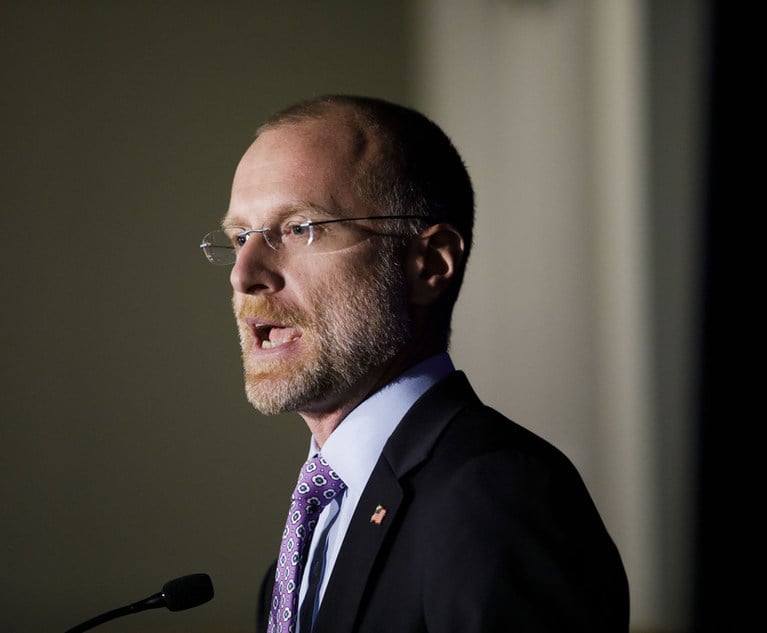
Big Law Communications, Media Attorneys Brace for Changes Under Trump
4 minute read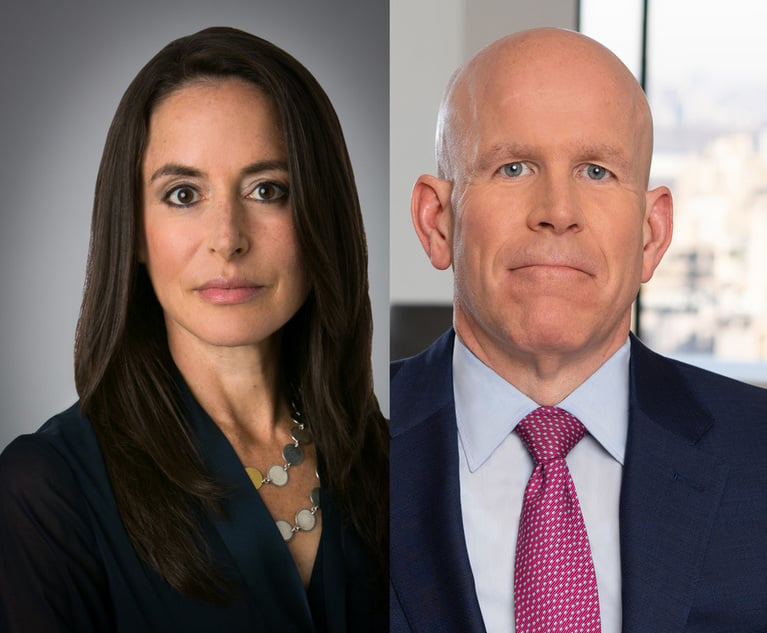
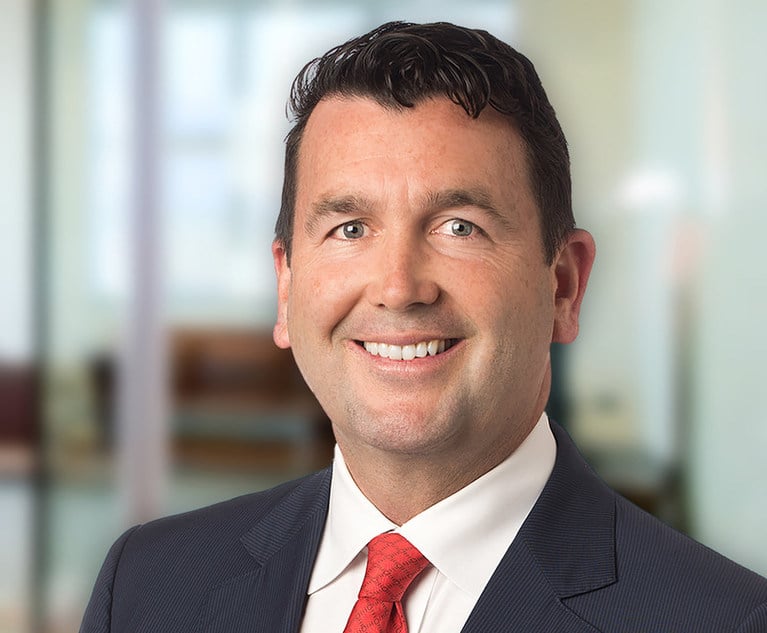
Polsinelli's Revenue and Profits Surge Amid Partner De-Equitizations, Retirements
5 minute readTrending Stories
- 1Commission Confirms Three of Newsom's Appellate Court Picks
- 2Judge Grants Special Counsel's Motion, Dismisses Criminal Case Against Trump Without Prejudice
- 3GEICO, Travelers to Pay NY $11.3M for Cybersecurity Breaches
- 4'Professional Misconduct': Maryland Supreme Court Disbars 86-Year-Old Attorney
- 5Capital Markets Partners Expect IPO Resurgence During Trump Administration
Who Got The Work
Michael G. Bongiorno, Andrew Scott Dulberg and Elizabeth E. Driscoll from Wilmer Cutler Pickering Hale and Dorr have stepped in to represent Symbotic Inc., an A.I.-enabled technology platform that focuses on increasing supply chain efficiency, and other defendants in a pending shareholder derivative lawsuit. The case, filed Oct. 2 in Massachusetts District Court by the Brown Law Firm on behalf of Stephen Austen, accuses certain officers and directors of misleading investors in regard to Symbotic's potential for margin growth by failing to disclose that the company was not equipped to timely deploy its systems or manage expenses through project delays. The case, assigned to U.S. District Judge Nathaniel M. Gorton, is 1:24-cv-12522, Austen v. Cohen et al.
Who Got The Work
Edmund Polubinski and Marie Killmond of Davis Polk & Wardwell have entered appearances for data platform software development company MongoDB and other defendants in a pending shareholder derivative lawsuit. The action, filed Oct. 7 in New York Southern District Court by the Brown Law Firm, accuses the company's directors and/or officers of falsely expressing confidence in the company’s restructuring of its sales incentive plan and downplaying the severity of decreases in its upfront commitments. The case is 1:24-cv-07594, Roy v. Ittycheria et al.
Who Got The Work
Amy O. Bruchs and Kurt F. Ellison of Michael Best & Friedrich have entered appearances for Epic Systems Corp. in a pending employment discrimination lawsuit. The suit was filed Sept. 7 in Wisconsin Western District Court by Levine Eisberner LLC and Siri & Glimstad on behalf of a project manager who claims that he was wrongfully terminated after applying for a religious exemption to the defendant's COVID-19 vaccine mandate. The case, assigned to U.S. Magistrate Judge Anita Marie Boor, is 3:24-cv-00630, Secker, Nathan v. Epic Systems Corporation.
Who Got The Work
David X. Sullivan, Thomas J. Finn and Gregory A. Hall from McCarter & English have entered appearances for Sunrun Installation Services in a pending civil rights lawsuit. The complaint was filed Sept. 4 in Connecticut District Court by attorney Robert M. Berke on behalf of former employee George Edward Steins, who was arrested and charged with employing an unregistered home improvement salesperson. The complaint alleges that had Sunrun informed the Connecticut Department of Consumer Protection that the plaintiff's employment had ended in 2017 and that he no longer held Sunrun's home improvement contractor license, he would not have been hit with charges, which were dismissed in May 2024. The case, assigned to U.S. District Judge Jeffrey A. Meyer, is 3:24-cv-01423, Steins v. Sunrun, Inc. et al.
Who Got The Work
Greenberg Traurig shareholder Joshua L. Raskin has entered an appearance for boohoo.com UK Ltd. in a pending patent infringement lawsuit. The suit, filed Sept. 3 in Texas Eastern District Court by Rozier Hardt McDonough on behalf of Alto Dynamics, asserts five patents related to an online shopping platform. The case, assigned to U.S. District Judge Rodney Gilstrap, is 2:24-cv-00719, Alto Dynamics, LLC v. boohoo.com UK Limited.
Featured Firms
Law Offices of Gary Martin Hays & Associates, P.C.
(470) 294-1674
Law Offices of Mark E. Salomone
(857) 444-6468
Smith & Hassler
(713) 739-1250








